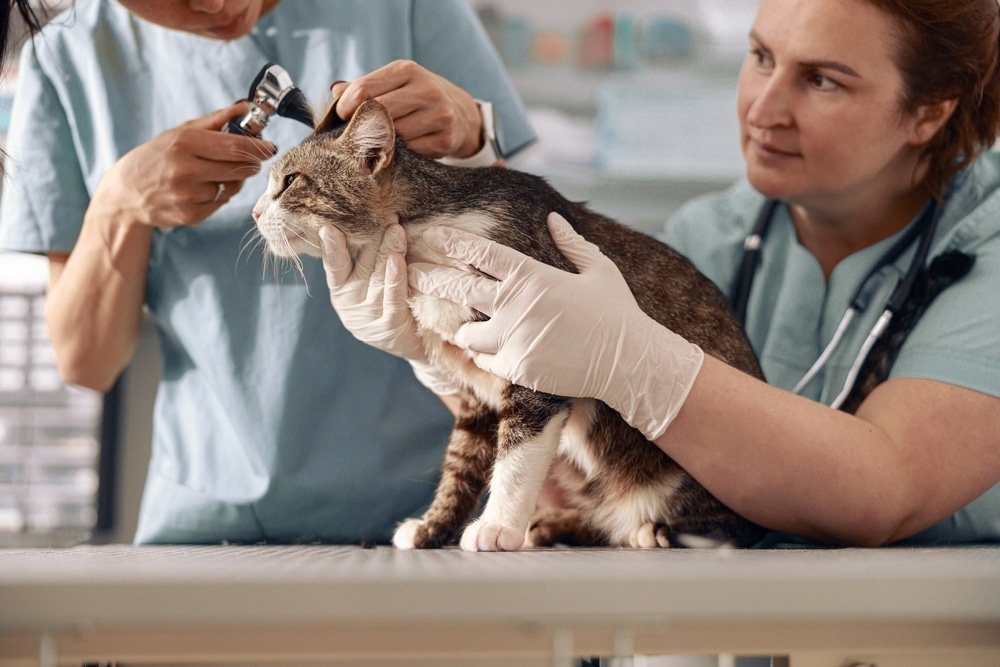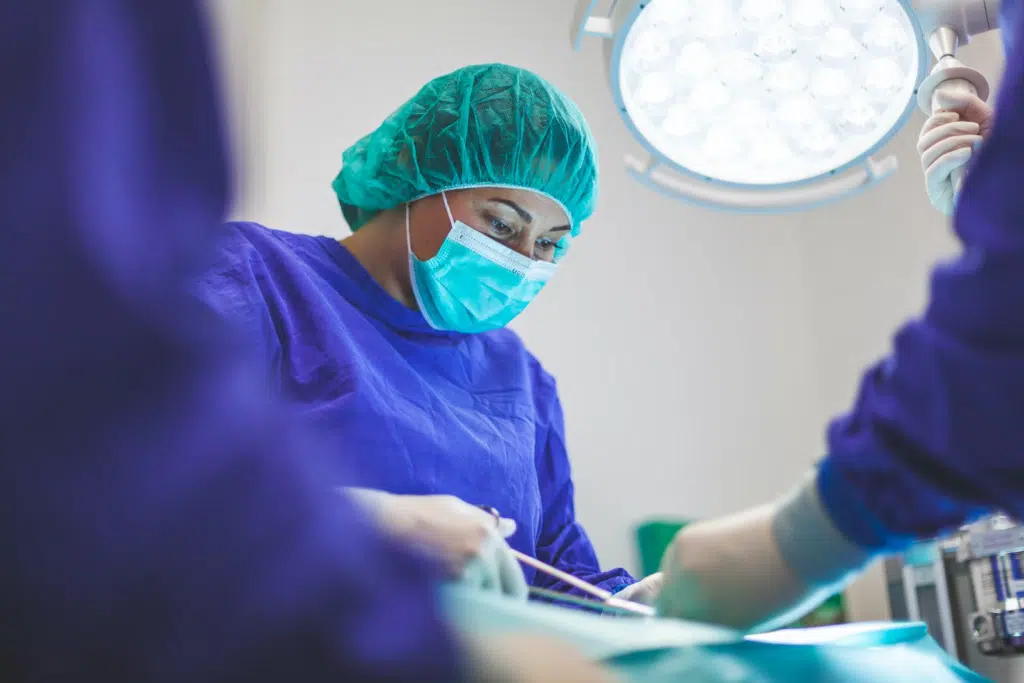Whether you’re running a small-town clinic or a fully equipped mobile unit, quality veterinary care requires more than just passion—it depends on having the right veterinary tools for the job. From stethoscopes to surgical lighting, each piece of equipment supports accurate diagnosis, effective treatment, and patient comfort.
Before you start stocking up, consider what type of practice you’re building. Your space, caseload, and patient population will all shape your equipment list. Use this quick checklist to guide your planning:
- Practice size and patient volume
- Budget
- Species and specialties served
- Mobile vs. brick-and-mortar setup
Below, you’ll find a comprehensive veterinary equipment list covering essentials for most practices—plus tips to help you choose items that fit your workflow, space, and budget.
1. Veterinary Diagnostic and Examination Tools

Accurate diagnosis is the foundation of effective treatment. These essentials help you gather the information you need quickly and with minimal stress on your patients.
- Exam and procedure tables – Sturdy, easy-to-clean surfaces with non-slip tops. Hydraulic or electric lift tables protect staff from strain and keep larger pets safe.
- Stethoscope – A go-to tool for listening to heart, lung, and gastrointestinal sounds in patients of all sizes.
- Digital thermometer – Quick, accurate temperature readings to detect fever or hypothermia.
- Coaxial ophthalmoscope – Reduces fundus shadows for clearer ocular exams.
- Otoscope – Essential for spotting infections, mites, or foreign material in the ear canal.
- Microscope – Key for cytology, fecal analysis, and other in-house tests that speed up diagnosis.
- Digital radiography (X-ray) – Enables detailed imaging without invasive procedures. Portable units are ideal for mobile practices. Suppliers like Patterson Veterinary provide a reputable, solid resource for diagnostic imaging and other veterinary equipment.
- Scales – Tabletop scales for small animals; floor platforms for dogs and larger patients.
- In-house lab equipment – Hematology analyzers, chemistry machines, and centrifuges provide same-day results. Look to suppliers such as Victor Medical for your in-house diagnostic needs.
- Bandaging materials – Gauze, cohesive wraps, and tape for wound care and post-procedure protection.
2. Surgical Tools and Equipment
Whether you’re performing routine spays and neuters or complex procedures, surgical tools must be reliable, sterile, and suited to your patient base.
- Operating table – Adjustable positioning for better access during surgery.
- Surgical lighting – Bright, shadow-free light for precision work.
- Anesthesia machine with monitoring equipment – Safe delivery of oxygen and anesthetic agents, with vital sign tracking (heart rate, blood pressure, SpO₂).
- IV pumps – Controlled delivery of fluids and medications.
- Dental suite – Ultrasonic scaler, polisher, and dental radiography to support oral health.
- Autoclave/sterilizer – For proper sterilization between uses.
- Patient warming equipment – Maintains body temperature during anesthesia.
- Surgical instruments – Scalpels, forceps, needle holders, suture material, drapes, and gowns in multiple sizes. Medline provides reliable veterinary equipment needed in the OR.
3. Treatment and Recovery Equipment

These veterinarian tools support healing, improve patient comfort, and enable targeted treatment.
- Fluid therapy supplies – IV catheters, pumps, and warming devices for hydration and medication delivery. Look to suppliers such as MWI for your fluid therapy needs.
- Bandaging and splinting supplies – For orthopedic support and wound protection.
- Oxygen supply – Tanks or concentrators for respiratory support.
- Recovery kennels – Safe, comfortable spaces for post-procedure monitoring.
4. Monitoring Tools
Continuous monitoring is essential for patient safety and treatment decisions.
- Multiparameter monitors – Track ECG, blood pressure, SpO₂, temperature, and respiration in one device.
- Portable monitoring tools – Handheld pulse oximeters, Dopplers, and capnographs for flexible use.
- Weight scales – For accurate dosing and health tracking over time.
5. Operational Essentials
Behind every smooth-running practice is an organized operational setup.
- Veterinary practice management software – Platforms like DaySmart Vet integrate scheduling, medical records, billing, and inventory, freeing your team to focus on care.
- Adequate lighting – Not just in surgery; bright, adjustable lighting improves accuracy in exam areas.
- Secure storage – Lockable cabinets for controlled substances and organized shelving for supplies.
Budgeting for Veterinary Equipment
The best investment is one that balances quality, durability, and cost-effectiveness.
- Start with must-haves, then expand as your caseload grows.
- Factor in maintenance, consumables, and staff training.
- Use DaySmart Vet to track equipment costs, manage inventory, and integrate with QuickBooks Online for seamless accounting.
- Look to veterinary educational resources, specifically AVMA for a list of best practices and clinic setup guidelines.

Veterinarian Tools FAQ
What tools do veterinarians use?
Veterinarians use a mix of diagnostic, surgical, and treatment tools. Common examples include:
- Stethoscopes
- Digital thermometers
- Microscopes
- Imaging equipment (X-ray, ultrasound)
- Surgical instruments
- Veterinary practice management software
Why are veterinary tools so expensive?
Veterinary tools are expensive because they require specialized design for animal care, precision engineering, high-quality materials, and regular maintenance or calibration. Many tools also come from niche manufacturers with limited production runs.
How many tools does a veterinarian need?
A general practice veterinarian typically needs dozens of tools, including:
- Basic diagnostic equipment
- Surgical instruments
- Treatment supplies
- Monitoring devices
Specialty practices may require advanced tools like endoscopes, CT scanners, or dental suites.
What is the most important tool for a veterinarian?
While needs vary by specialty, the stethoscope is often considered the most essential tool. It’s used in nearly every exam to assess heart, lung, and gastrointestinal health, giving you an idea of what may be going on with your patient before advanced diagnostics can be performed.
Do veterinarians have to use vet-specific tools?
Some tools overlap veterinary medicine and human medicine, such as stethoscopes, thermometers, X-ray machines, and some surgical instruments. But there are veterinary tools are often adapted for different species and sizes of patients, so it’s important to research which tools you will need to complete adequate care, and see if they need to be vet-specific or if you can use the human equivalent.
Equipping your veterinary practice with the right tools is essential to delivering quality care, improving patient outcomes, and running an efficient clinic. Whether you’re starting fresh or upgrading your existing setup, thoughtful selection and budgeting ensure your investment supports both your team and your patients long-term. Ready to streamline your workflow and keep all your veterinary tools and equipment organized?
Ready to keep your practice organized and your equipment working hard for you?
Book a free DaySmart Vet demo to see how our software supports your entire care process—from appointment booking to follow-up.

